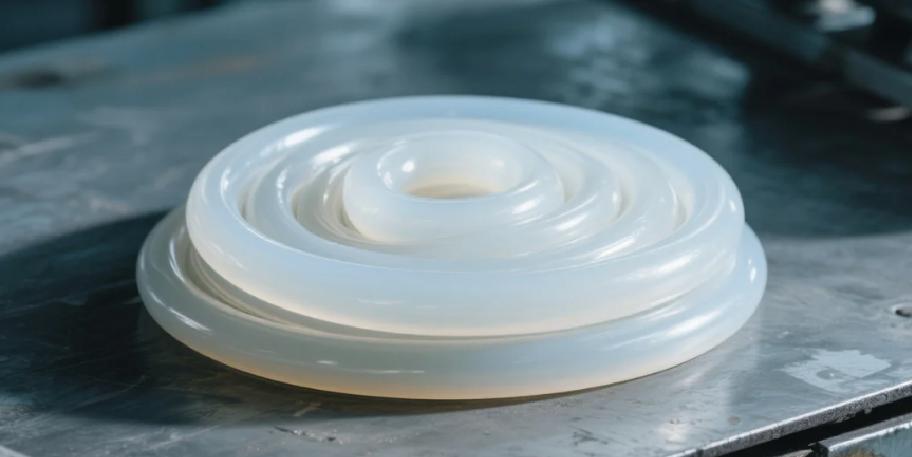LONGSUN High Flame-Retardant Silicone Rubber Compounds from Longsun : A New Elastic Material Combining Safety and Performance
2025-10-22
Amid the trend of industrial materials upgrading toward "safety and high performance," high flame-retardant silicone rubber compounds have become a key material for meeting fire protection needs across multiple fields through functional modification of traditional silicone rubber. They not only retain the basic advantages of silicone rubber but also achieve excellent flame-retardant effects through optimized special formulas, providing reliable material solutions for scenarios with high requirements for safety and weather resistance.
I. Product Overview: What Are High Flame-Retardant Silicone Rubber Compounds?
High flame-retardant silicone rubber compounds are elastomeric materials made by mixing and refining silicone rubber as the base raw material, with the addition of flame retardants, reinforcing agents, and other functional additives through specific processes.
Their core characteristic lies in the combination of "high flame retardancy" and "essential advantages of silicone rubber": On one hand, they inherit the inherent properties of silicone rubber, such as resistance to high and low temperatures, aging resistance, and good insulation; on the other hand, through precise regulation of the flame-retardant system, they can quickly inhibit the spread of combustion when exposed to fire, reduce the release of smoke and toxic gases, and avoid secondary hazards caused by flame diffusion.
In terms of form, they mostly exist as solid rubber materials. Depending on subsequent processing needs, they can be made into finished products of different shapes through processes such as molding, extrusion, and vulcanization, adapting to diverse application scenarios.
II. Core Features and Advantages: Comprehensive Performance Surpassing Traditional Materials
The competitiveness of high flame-retardant silicone rubber compounds stems from their comprehensive advantages in flame retardancy, adaptability, and environmental protection, which effectively address the pain points of traditional materials in balancing safety and performance.
1. High Flame Retardancy: Building a Solid Safety Barrier
This is its most core advantage. When exposed to open flames or high-temperature environments, it can quickly form a flame-retardant protective layer to delay or even stop the combustion process. At the same time, it reduces smoke generation and toxic gas release, lowering the risk of casualties and equipment damage in fires, and meets strict flame-retardant standards in multiple industries.
2. High and Low-Temperature Stability: Adapting to Extreme Environments
Relying on the molecular structure characteristics of silicone rubber, it can maintain stable performance within a wide temperature range. Whether it is flexibility in low-temperature environments or resistance to softening and melting in high-temperature environments, it far surpasses ordinary flame-retardant materials. It can cope with scenarios with drastic temperature differences, such as outdoor areas and the interior of industrial equipment, and is not prone to cracking or performance degradation due to temperature changes.
3. Environmental Safety: Aligning with Green Development Needs
The selection of its raw materials and additives follows the concept of environmental protection, containing no toxic and harmful substances such as halogens and heavy metals. During production, processing, use, and waste recycling, it does not pollute the environment or harm the human body. At the same time, even in high-temperature or combustion scenarios, the release of harmful substances is far lower than that of traditional flame-retardant materials, complying with the requirements of mainstream global environmental regulations.
4. Balanced Mechanical Properties: Combining Practicality and Durability
While enhancing flame retardancy, it does not sacrifice the mechanical properties of silicone rubber. It has good tensile strength, tear resistance, and elastic recovery ability. After processing and molding, the finished products can withstand friction, collision, and deformation in daily use, are not easy to break or age, and extend the service life of applied products.
III. Main Application Fields: Focusing on Scenarios with High Safety Requirements
The application of high flame-retardant silicone rubber compounds is concentrated in industries with dual requirements for "flame retardancy + weather resistance/insulation," and its performance advantages can accurately match the core pain points of these fields.
1. Electronic and Electrical Industry
As a key material for electronic components, cables, and connectors, it can be used to manufacture insulating sheaths, seals, gaskets, and other components. In emergency situations such as circuit short circuits and high-temperature overloads, its flame-retardant performance prevents the spread of flames and protects core electronic components; at the same time, its excellent insulation and aging resistance ensure the long-term stable operation of electrical equipment, making it suitable for scenarios such as consumer electronics, industrial control equipment, and communication equipment.
2. New Energy Field
In new energy vehicles, energy storage systems, photovoltaic inverters, and other equipment, it is mainly used for seals around batteries, cable insulation layers, and coating of heat dissipation components. New energy equipment has extremely high safety requirements, especially battery modules that are prone to safety risks due to high temperatures. High flame-retardant silicone rubber compounds can effectively block flames and, at the same time, withstand temperature fluctuations during equipment operation, providing protection for the safety of new energy systems.
3. Rail Transit and Aerospace
The interior decorations of rail transit carriages, cable sheaths, and internal sealing and insulation components of aerospace equipment all need to meet strict flame-retardant and weather-resistant standards. This material can adapt to the long-term operating temperature differences and vibration environments of rail transit, as well as the extreme temperature, humidity, and air pressure conditions in the aerospace field. It not only ensures fire safety but also resists the erosion of materials by complex environments, improving the reliability of transportation and aerospace equipment.
4. Building Materials and Industrial Protection
In the construction field, it can be used for fire-resistant sealants, pipeline coating materials, cable tray insulation layers, etc., helping buildings meet fire rating requirements; in industrial scenarios, it can be made into seals for high-temperature equipment, fire door seals, etc., to cope with complex environments such as high temperatures and oil pollution in industrial production, reduce fire hazards, and protect the safety of industrial facilities.
Conclusion
By combining "upgraded flame-retardant performance + retained essential advantages of silicone rubber," high flame-retardant silicone rubber compounds break the limitation of traditional materials where "safety and performance are difficult to balance," and have become an important material for promoting safety upgrades in multiple industries. As safety standards continue to improve in various fields, its application scenarios will further expand. In the future, through formula optimization and process innovation, it will also achieve breakthroughs in "more lightweight, easier processing, and better adaptation to segmented scenarios," providing stronger support for the safe development of industries.

If you are interested in our company’s such products or have purchase intentions, please contact Mr. Jami Lan, the E-commerce Manager. His mobile phone number is the same as his WeChat ID: 18098293536.
Previous:
Recommend News

